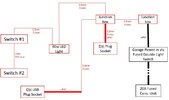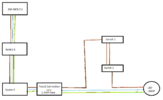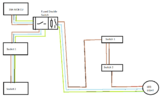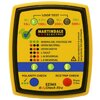Hi all,
I'm going to amend some of the wiring in my garage to add 2x double sockets (1 w/ USB), and also add some LED two-way lighting.
The power is on its own ring from the CU (20A RCD). However, the power comes in to a fused double light switch, and wanted to check my plan is safe/in regs etc.
First question, is whether it's safe to pull the electric from this fused double light switch? See attachments below.
- switches currently control the garage sensor and internal lightbulb
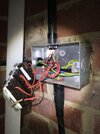
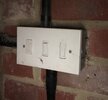
Second question is then, does my wiring plan work for this purpose? Red = new parts to add. Black = old parts.
- The current uPVC conduit line that I'll connect to a junction box currently powers a fused single socket, which powers a fridge/freezer, so I'd assume this is already 2.5mm.
- The second uPVC conduit line powers a sensor light outside the garage, and a switched single lightbulb, so would assume this is at least already 1.5mm.
- The thick bars indicated uPVC conduit as they'll be running from the garage eaves 1m down from the roof-line, so just some protection for the cable.
- One socket in new non-USB double socket will be used for fridge freezer. Other sockets likely used for charging phones / tools / power tools etc.
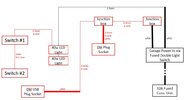
Thanks very much for your time!
I'm going to amend some of the wiring in my garage to add 2x double sockets (1 w/ USB), and also add some LED two-way lighting.
The power is on its own ring from the CU (20A RCD). However, the power comes in to a fused double light switch, and wanted to check my plan is safe/in regs etc.
First question, is whether it's safe to pull the electric from this fused double light switch? See attachments below.
- switches currently control the garage sensor and internal lightbulb


Second question is then, does my wiring plan work for this purpose? Red = new parts to add. Black = old parts.
- The current uPVC conduit line that I'll connect to a junction box currently powers a fused single socket, which powers a fridge/freezer, so I'd assume this is already 2.5mm.
- The second uPVC conduit line powers a sensor light outside the garage, and a switched single lightbulb, so would assume this is at least already 1.5mm.
- The thick bars indicated uPVC conduit as they'll be running from the garage eaves 1m down from the roof-line, so just some protection for the cable.
- One socket in new non-USB double socket will be used for fridge freezer. Other sockets likely used for charging phones / tools / power tools etc.

Thanks very much for your time!
Last edited:


